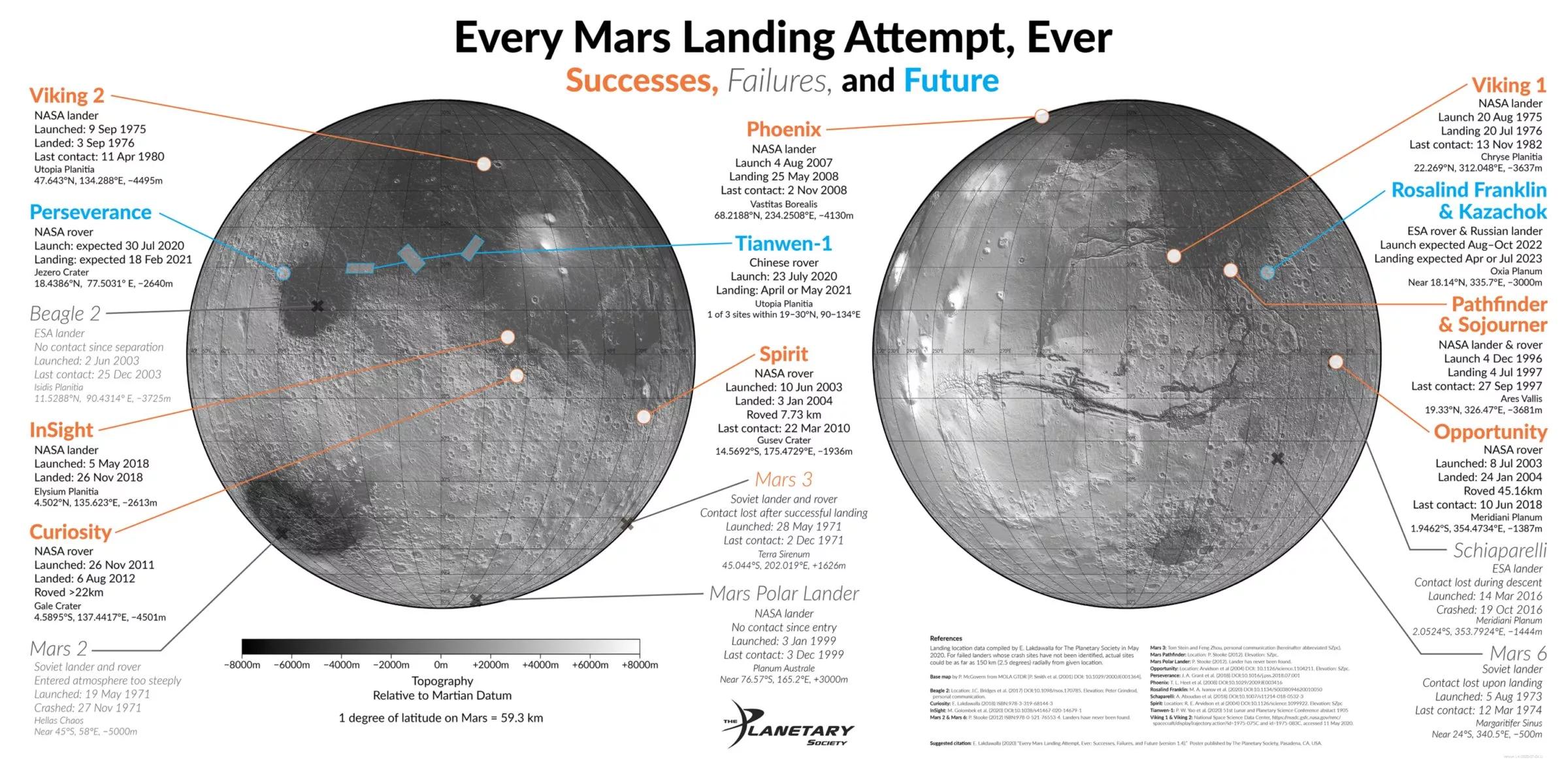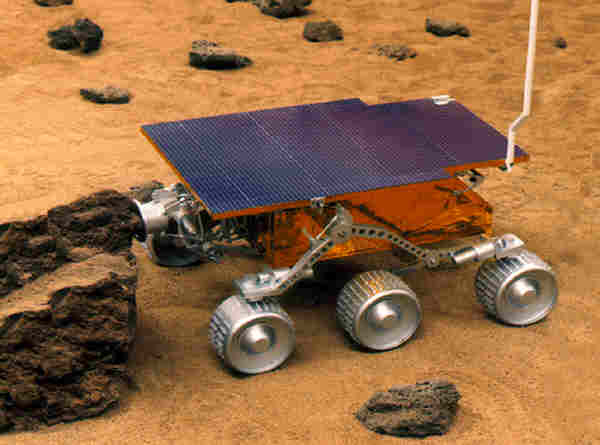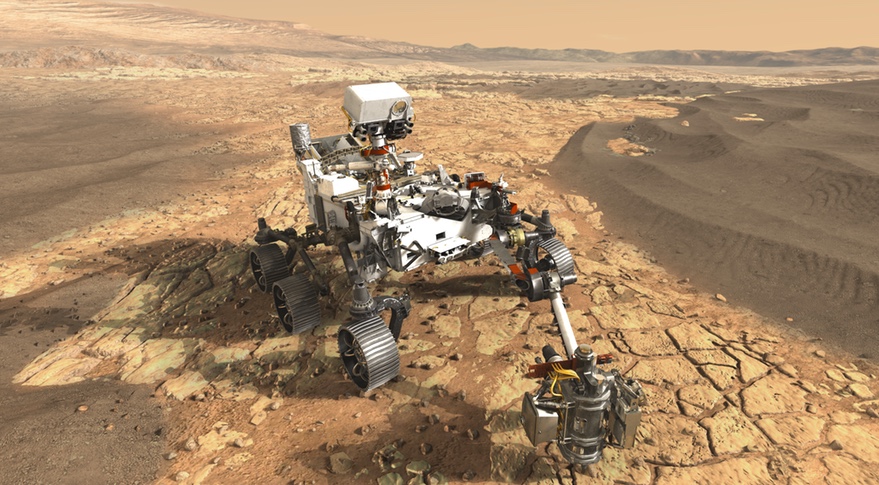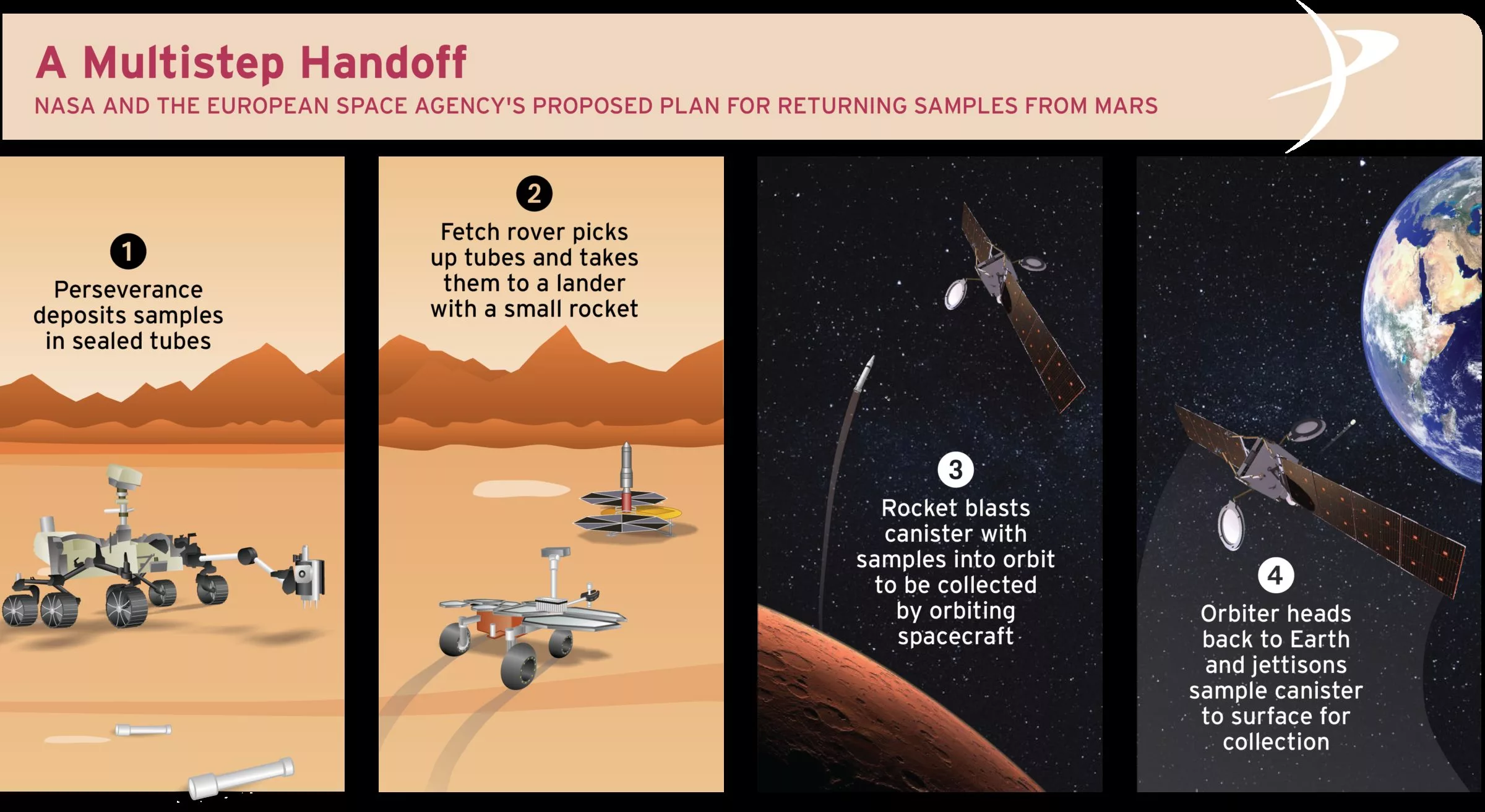Journey To Mars
Aug 17, 2020
Today, there are more spacecraft operating at Mars than any planet besides Earth. Mars has been historically unkind to our attempts to send spacecraft there, with roughly half of all Mars missions failing. That percentage has improved in recent years. This map of Mars’ surface shows the location of every past, present, and future lander mission.

Viking Mission to Mars

NASA’s Viking Project found a place in history when it became the first U.S. mission to land a spacecraft safely on the surface of Mars and return images of the surface.
The primary mission objectives were to obtain high resolution images of the Martian surface, characterize the structure and composition of the atmosphere and surface, and search for evidence of life. Viking 1 was launched on August 20, 1975 and arrived at Mars on June 19, 1976. Viking 2 was launched September 9, 1975 and entered Mars orbit on August 7, 1976.
Besides taking photographs and collecting other science data on the Martian surface, the two landers conducted three biology experiments designed to look for possible signs of life. These experiments discovered unexpected and enigmatic chemical activity in the Martian soil, but provided no clear evidence for the presence of living microorganisms in soil near the landing sites.
Mars Pathfinder- Rover: “Sojourner”

In 1996, NASA – Jet Propulsion Laboratory and California Institute of Technology have designed new rovers with identical structure named Sojourner and Marie-Curie. These small rovers were only 10.5 kilograms and microwave oven sized. Rover Sojourner launched with Pathfinder landing module in December 1996. Marie Curie rover was also planning to send Mars with 2001 mission which has been cancelled Sojourner was a breaking point of exploration rovers with its unique six-wheeled suspension system which can overcome one and a half wheel diameter height obstacles that is similar to an automobile passing over a table sized obstacle. From landing, July 4, 1997, until the final data transmission on September 27, 1997, Mars Pathfinder returned 2.3 billion bits of information, including more than 16,500 images from the lander and 550 images from the rover, as well as more than 15 chemical analyses of rocks and soil and extensive data on winds and other weather factors.
Mars Exploration Rovers

In January 2004, two robotic geologists named Spirit and Opportunity landed on opposite sides of the red planet. With data from the rovers, mission scientists have reconstructed an ancient past when Mars was awash in water. Spirit and Opportunity each found evidence for past wet conditions that possibly could have supported microbial life.
Each Mars Exploration Rover is 1.6 meter long and weighs 174 kilograms. Opposite to previous rover Sojourner, which was commanded via lander Pathfinder, these robots carry all required electronic devices on their body. Mobility system is similar to Sojourner rover with Rocker-Bogie suspension and 4-wheel steering. Both rovers exceeded their planned 90-day mission lifetimes by many years. Spirit lasted 20 times longer than its original design until its final communication to Earth on March 22, 2010. Opportunity continues to operate more than a decade after launch. In 2015, Opportunity broke the record for extraterrestrial travel by rolling greater than the distance of a 26-mile (42-kilometer) marathon.
Mars Phoenix
The Phoenix mission was the first chosen for NASA’s Scout program, an initiative for smaller, lower-cost, competed spacecraft. In the continuing pursuit of water on Mars, the polar regions are a good place to probe, as water ice is found there. To analyze soil samples collected by its robotic arm, Phoenix carried tiny ovens and a portable laboratory. Selected samples were heated to release volatiles that were examined for their chemical composition and other characteristics. Phoenix also scanned the atmosphere up to 20 kilometers (12.4 miles) in altitude, obtaining data about the formation, duration and movement of clouds, fog, and dust plumes. It also carried temperature and pressure sensors.
Mars Science Laboratory- Rover: “Curiosity”
Part of NASA’s Mars Science Laboratory mission, Curiosity is the largest and most capable rover ever sent to Mars. It launched November 26, 2011 and landed on Mars at 10:32 p.m. PDT on Aug. 5, 2012. It is fit to climb over knee-high obstacles and travels about 100 feet (30 meters) per hour, depending on instrument activity, the terrain, and visibility its cameras have of the path ahead. The rover carries a radioisotope power system that generates electricity from the heat of plutonium’s radioactive decay. Curiosity’s large size allows it to carry an advanced kit of 10 science instruments. It has tools including 17 cameras, a laser to vaporize and study small pinpoint spots of rocks at a distance, and a drill to collect powdered rock samples.
InSight (Discovery Mission)

InSight (Interior Exploration using Seismic Investigations, Geodesy and Heat Transport) is a NASA Discovery Program mission that will place a single geophysical lander on Mars to study its deep interior. By using sophisticated geophysical instruments, InSight will delve deep beneath the surface of Mars, detecting the fingerprints of the processes of terrestrial planet formation, as well as measuring the planet’s “vital signs”: Its “pulse” (seismology), “temperature” (heat flow probe), and “reflexes” (precision tracking).
Mars 2020 Perseverance Rover

The Mars 2020 Perseverance Rover mission is part of NASA’s Mars Exploration Program, a long-term effort of robotic exploration of the Red Planet. Perseverance will test a technology for extracting oxygen from the Martian atmosphere, which is 96% carbon dioxide. This demonstration helps mission planners test ways of using Mars’ natural resources to support human explorers and improve designs for life support, transportation, and other important systems for living and working on Mars. The rover also monitors weather and dust in the Martian atmosphere. Such studies are important for understanding daily and seasonal changes on Mars, and will help future human explorers better predict Martian weather.
The Mars Helicopter, Ingenuity, is a technology demonstration to test powered flight on another world for the first time. It is hitching a ride on the Perseverance rover. A series of flight tests will be performed over a 30-Martian-day experimental window that will begin sometime in the spring of 2021 That will be a major milestone: the very first powered flight in the extremely thin atmosphere of Mars! After that, the team will attempt additional experimental flights of incrementally farther distance and greater altitude. After the helicopter completes its technology demonstration, Perseverance will continue its scientific mission.
Concepts for Mars Sample Return

Mars Sample Return is a series of missions by NASA and the European Space Agency to return samples from Mars’ surface to Earth by 2031. Despite advances in space technology, certain science questions—including whether or not a Mars rock sample contains signs of ancient life—can only be answered in Earth-based laboratories.
Was Mars warm and wet for long periods during which life could have arisen, or mostly cold and dry with only brief intervals that could have supported life? What was its early atmosphere like? Can we find direct evidence of past life there, such as fossilized microbes or ancient chemical signatures that resemble life as we know it?
These answers can be found in Mars’ rocks and soil, which lock in atmospheric gases, preserve signs of past life, and carry clues revealing the environment in which they formed. Despite impressive advances in miniaturizing science instruments for space missions, certain questions can only be answered by tools that are too large, heavy, and power-hungry to fly on spacecraft. Fortunately, there’s a way around this limitation: rather than bringing our tools to Mars, we can bring Mars samples back to Earth.
Share


